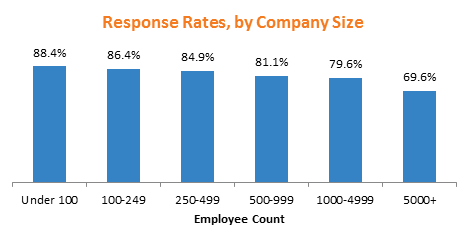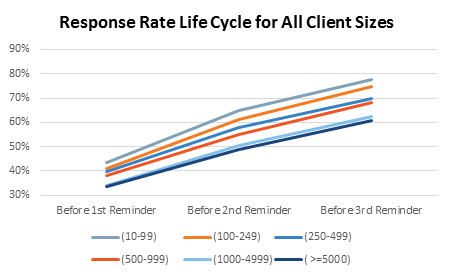Understanding & Improving the Survey Response Rate
Across all of Quantum Workplace's customers, regardless of organization size, all customers see an increased response rate with more frequent and visible survey communication.
In this article:
What is a "Good" Response Rate?
Generally, a "good" response rate for an engagement survey depends on the size of the organization:
- More than 500 employees: 70-80%
- Less than 500 employees: 80-90%

Our Response Rate is Less than 40%, What do I do?
Increase Survey Communication
Don't be alarmed by a low initial response rate. Engagement surveys are a conversation, and responses do not passively increase over time- send out reminder emails and communicate the purpose of the survey.
Across all of Quantum Workplace's customers, regardless of organization size, all customers see an increased response rate with more frequent and visible survey communication.
Response rates typically hover around 40% before the first reminder, 60% before the second reminder, and 70% before the third reminder.

Many organizations will continue to send survey communication and reminders until the organization's response rates reaches 80-90%.
Extend Survey Close Dates
If your organization's response rate remains lower than desired, consider extending the survey's end date.
In addition to extending the survey, it's important to communicate deadlines and send reminders to your employees. Continue making the necessary accommodations to ensure survey participants can conveniently complete the survey.
